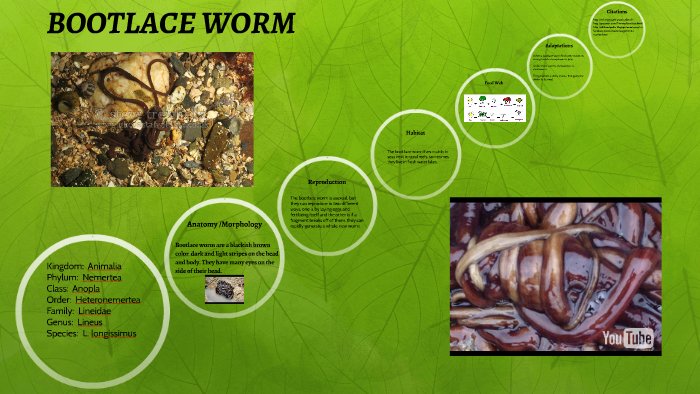
So, why does seasonality matter for bootlace worms? Well, these remarkable creatures thrive in specific conditions that vary as temperatures shift and environments change. Understanding where they live and how their habitat preferences change can help researchers and enthusiasts alike appreciate these intriguing organisms even more.
What Are Bootlace Worms?
Before we dig deep into their habitats, let’s talk about what makes bootlace worms so special. Bootlace worms are found mainly in the waters of the North Atlantic and surrounding areas. They’re famous for their incredibly long bodies and unique ability to break down organic matter in the ocean. You might call them the recyclers of the sea.
Unlike earthworms that aerate soil, bootlace worms play a vital role in marine ecosystems by breaking down detritus, which is dead organic material. This process is key to maintaining the health of ocean environments. The bootlace worm is not just long but can also be quite colorful, often displaying hues of brown, yellow, and green, which can help it blend into the seaweed or sandy seabed where it typically resides.
Summer: A Time of Abundance
During the summer months, bootlace worms tend to flourish. This season brings warmer waters, increasing food availability and optimal conditions for growth. During this time, bootlace worms seek out shallow coastal waters, often found hiding in seaweed beds and murky sediments.
The warmth not only aids in their feeding but also encourages reproduction. They thrive in areas rich in nutrients, where they can easily feast on the organic debris washed in by currents. You might see them coiling among the rocks and sand, where they blend in seamlessly with their surroundings.
However, with all this abundance comes competition. Other marine animals also take advantage of these nutrient-rich environments. Bootlace worms must be adept at finding the perfect spots where they can thrive without facing too much competition. Honestly, it’s like a game of hide-and-seek, but with nutrients instead of players!
Autumn: A Transition Phase
As autumn rolls in, the ocean temperatures begin to cool, and bootlace worms adjust to the changing conditions. This transition period sees them starting to retreat to deeper waters where the temperature is more stable. You might be wondering why they don’t just stay in the shallow areas—well, the food sources start to dwindle as the summer blooms fade away.
During this time, bootlace worms can be found moving into more sheltered spots, such as rock crevices or areas with significant sea grass cover. These habitats provide both protection and access to any remaining organic material. Think of it as preparing for winter by securing a cozy, safe space!
Winter: Survival Mode
Winter is a tough season for many marine creatures, and bootlace worms are no exception. As temperatures dip, these worms go into a sort of hibernation mode. They may burrow into the sediment, seeking warmer areas where they can avoid harsh conditions.
In winter, their activity levels significantly decrease. The food supply wanes, and the worms rely on stored energy to survive. They are often found in deeper waters during this season, where they can still find some food but must be careful to conserve energy. Picture a bear hibernating in its den—bootlace worms essentially do something similar, conserving resources as they wait for the return of spring.
Spring: Reawakening
As the sun starts to warm the ocean waters again, bootlace worms wake up from their winter dormancy. With the arrival of spring, food sources start to flourish again, and these worms begin to reemerge into shallower waters. You can think of it as spring cleaning—everything is fresh and new, and the worms are eager to take advantage of it.
During this time, they also begin their mating rituals. Bootlace worms are known for their unique reproductive habits, which can involve releasing gametes into the water. The increase in food availability helps support this reproductive phase, allowing the next generation of bootlace worms to grow strong.
Why Habitat Preferences Matter
Understanding the seasonal habitat preferences of bootlace worms can teach us a lot about marine ecology. Their sensitivity to temperature and food availability makes them indicators of environmental health. Changes in their populations can signal shifts in the ecosystem, such as climate change or pollution.
When you think about it, every creature, no matter how small, plays a part in the larger picture of its environment. So, by paying attention to the habitats that bootlace worms prefer throughout the seasons, we can gain valuable insights into the health of our oceans.
Bootlace worms may be some of the most bizarre creatures in the ocean, but their seasonal habitat preferences reveal a lot about their lives and the health of marine environments. From thriving in nutrient-rich summer waters to hibernating in winter’s depths, these worms adjust like seasoned pros.
Next time you’re by the ocean, take a moment to appreciate not just the beauty of the waves and sands, but the incredible life forms like the bootlace worm that contribute to the ecosystem. Each season brings with it new challenges and opportunities, reminding us that adaptability is key—whether in nature or our own lives.
